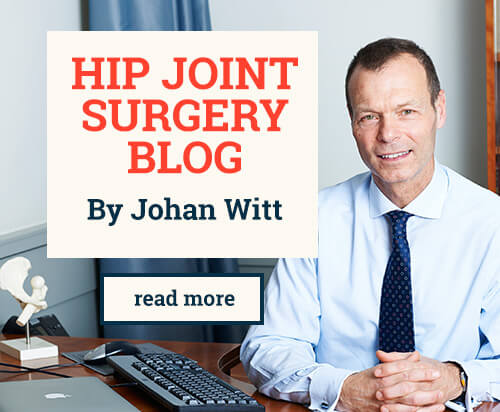Hip Arthroscopy
Hip arthroscopy is a minimally invasive technique whereby it is possible to look inside the hip joint with the aid of a fibre optic telescope and in many instances perform a variety of surgical procedures using that technique. Most people are familiar with knee arthroscopy for the treatment of cartilage and ligament disorders, but hip arthroscopy is a much less common procedure. This is partly because it has taken quite some time for the technique of the procedure to evolve and for there to be the right type of instruments and equipment to facilitate it.
The hip is a much deeper joint than the knee and for that reason it is much harder to introduce the arthroscope into the joint. In order to do this the hip joint has to be distracted by traction to produce enough space to introduce the instruments. Once this has been achieved it is then possible to examine the joint and determine the cause of particular symptoms and in many cases deal with the cause.
Loose bodies – Loose pieces of cartilage or bone can sometimes form in the joint for a variety of reasons and these can get caught between the bone surfaces leading to pain . These can be very effectively removed by hip arthroscopy.
Arthritis – some early stages of arthritis can be associated with loose bodies or flaps of articular cartilage. Debriding these abnormal areas can often improve symptoms for a while, although it does not get rid of the underlying condition, it can by time before a more definitive procedure is required.
Ligamentum Teres injury – Occasionally a strong ligament with the hip joint can get torn leading to pain. This is amenable to being trimmed back arthroscopically so that it does not cause problems
Femoracetabular impingement – this is a condition where there is an abnormal shape to the femoral head and sometimes to the acetabulum (socket). This can give rise to damage within the hip joint. It is possible to deal with some aspects of this condition arthroscopically such as trimming abnormal bumps of bone from the femoral head/neck junction.
Diagnostic – sometimes, even after a number of other investigations such as CT and MRI, it is not possible to be sure what the cause of a problem in the hip is. In these cases it is very helpful to perform a hip arthroscopy.
Biopsy – There may be some conditions of the hip that need a sample of tissue taken to be analysed. Hip arthroscopy allows this to be done quite easily.
The time taken for specific goals to be achieved will depend on the details of the surgery carried out in any individual case, but the overall programme of rehabilitation is similar in most cases.
0-4 weeks
The initial recovery is dictated somewhat by the time needed to be on crutches. Routinely in my practice, most patients will be 50% PWB for the first 4 weeks. This is to avoid over stressing the femoral neck when a significant osteochondroplasty has been performed. In other cases the weight bearing restriction may be shorter such as 2-3 weeks. If a micro-fracture has been performed then restricted weightbearing with crutches would be needed for 6 weeks.
The focus in the early rehab is to encourage range of motion but not to push this. In particular avoiding excessive hip extension stretches to allow the capsule to heal and not pushing flexion beyond 100-110 degrees depending on comfort levels. Hip abductor and adductor exercises should be started from the outset. If hydrotherapy is available then this is an excellent way of initiating the recovery.
Hydrotherapy for the initial 4 weeks is very helpful when available. This can start the day after surgery and encourages hip mobility reducing the potential of scarring and adhesions.
Patients should be encouraged to start using an upright stationary bike from 1 week post op. The aim is to build up to 30 minutes daily if possible. 50-60 rpm is appropriate against light resistance.
Gentle and repetitive internal rotation exercises helpful to prevent stiffness and avoid adhesions
4-6 weeks
At 4 weeks patients will be coming off crutches, and it may be advisable for them to use 1 crutch for a few days before coming off crutches altogether. Gait training and balance exercises important at this stage. Stretching and strengthening of the muscles that cross the hip can progress. Lumbopelvic strength and stability exercises important to initiate.
6 weeks – 3 months
Progress with low impact exercise programme – stationary bike, cross trainer and swimming. Resistance exercise can increase according to comfort levels. Work on re-gaining full ROM
3 months onwards
Higher levels of impact can be introduced. Jogging can commence and should be built up gradually. Once running in a straight line comfortable, then twisting/turning/cutting exercises can be initiated – usually at about 4 months post op. Progress with sports specific exercise programme



